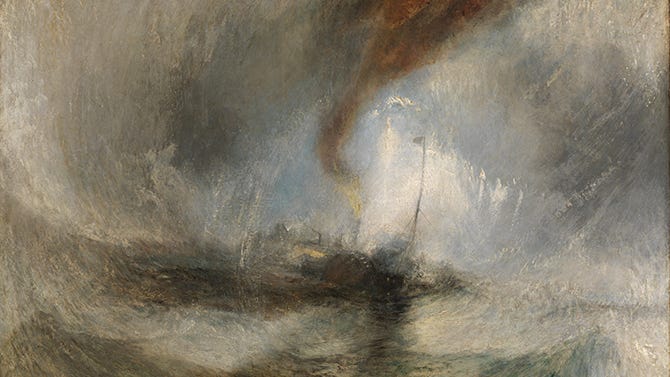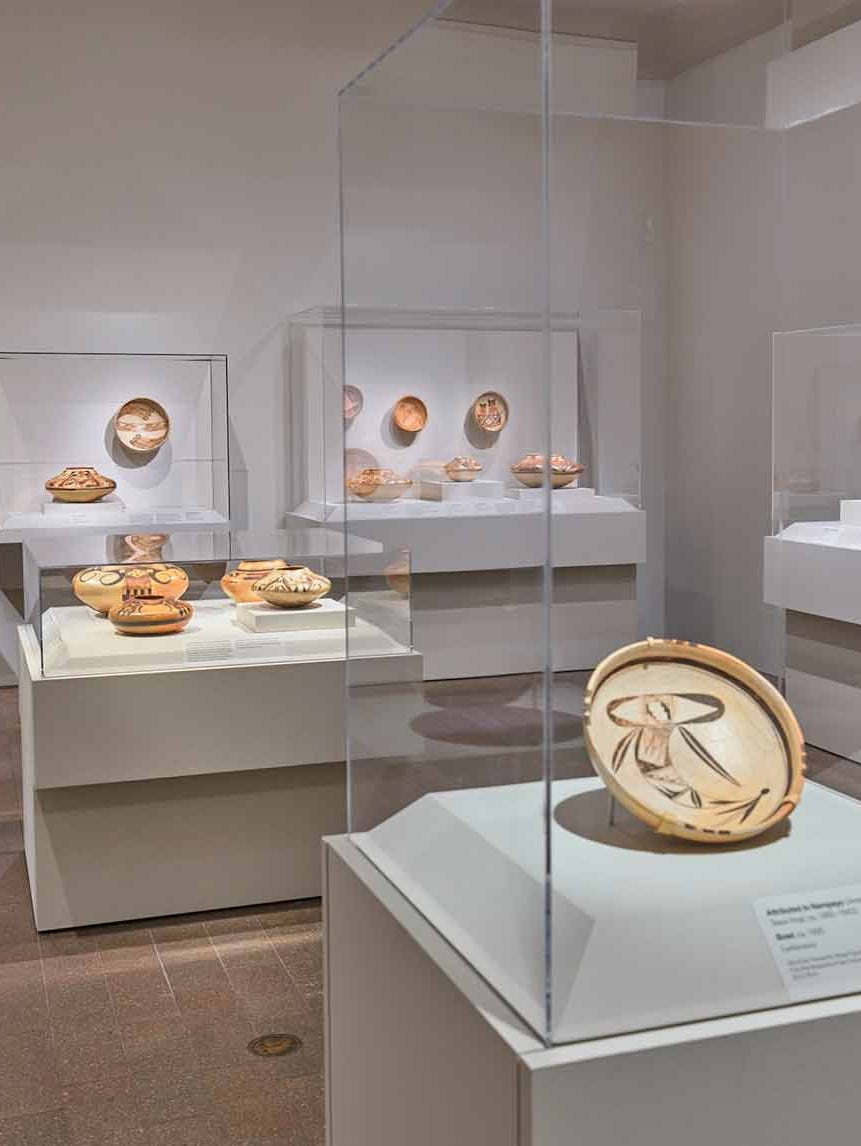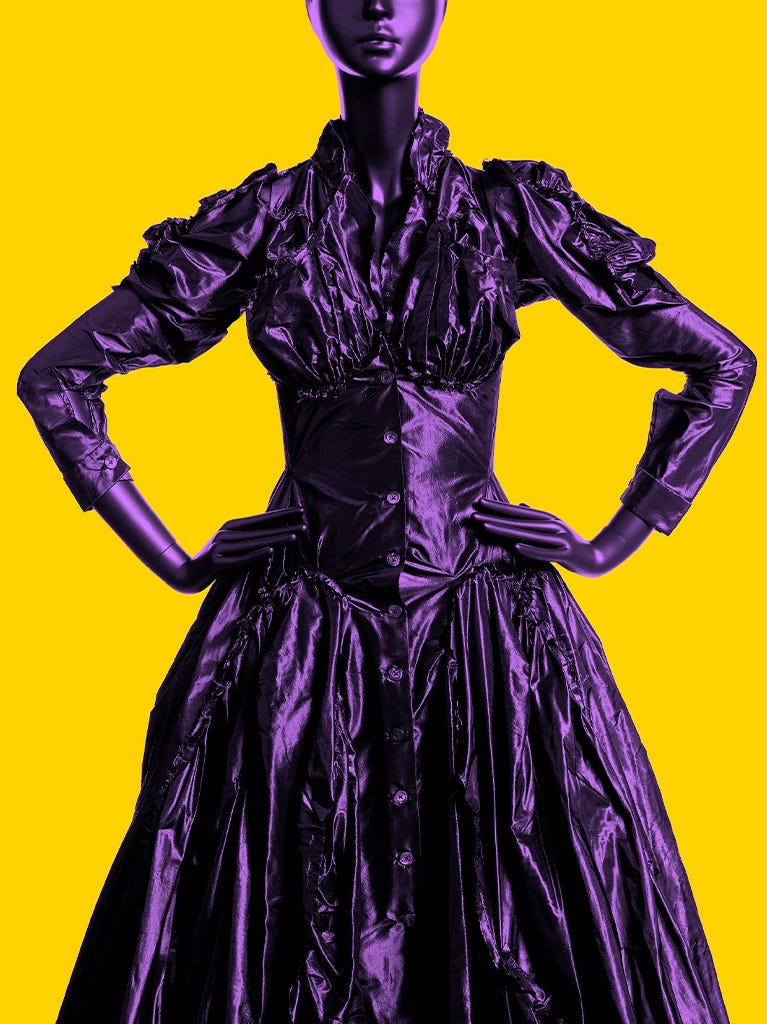Joseph Mallord William Turner, Snow Storm—Steam-Boat off a Harbour’s Mouth (detail), exhibited 1842. Oil on canvas. Tate London. Image © Tate, London 2014
J. M. W. Turner: Painting Set Free
Jump to
Joseph Mallord William Turner (1775 – 1851) was one of the greatest British artists of the nineteenth century. His paintings are revered for their spectacular effects of light and color, and have influenced generations of artists. His late work, created between 1835 and 1850, articulated a radical vision that was heedless of public reaction, and explored such themes as the rise and fall of civilizations, the natural and industrial worlds, and religious and cultural mythology.
Bringing together more than sixty oil paintings and watercolors from a host of international lenders, J. M. W. Turner: Painting Set Free is the first major exhibition devoted to Turner’s achievements during his final period of productivity, when some of his most iconic works were created. Challenging myths, assumptions, and interpretations that have grown around his later work, this show reveals a painter distinguished by the broad scope of his knowledge and imagination, as well as his experimental techniques, processes, and use of materials. It will also provide the unique opportunity for San Francisco audiences to experience firsthand some of the masterpieces featured this year in Mike Leigh’s critically acclaimed film Mr. Turner (Sony Classics, 2014).
Highlights of the exhibition include such renowned works as Snow Storm — Steam-Boat off a Harbor’s Mouth (1842, Tate, London); The Burning of the Houses of Lords and Commons, October 16, 1834 (1834 – 1835, Philadelphia Museum of Art), alongside newly identified watercolors of a fire at the Tower of London in 1841 (Tate, London); and two paintings conceived as a pair but rarely united since their first exhibition in 1839, Ancient Rome; Agrippina Landing with the Ashes of Germanicus (1839, Tate, London) and Modern Rome — Campo Vaccino (1839, J. Paul Getty Museum, Los Angeles). The show will conclude with the last works shown during Turner’s lifetime, a suite of paintings depicting the classical lovers Dido and Aeneas dating from 1850, the year of his last exhibits at the Royal Academy in London.
About the artist
Born in London, Turner entered the Royal Academy Schools in 1789, at the age of 14; he became an academician there in 1802, and was appointed professor of perspective in 1807. A prolific artist, he produced drawings, prints, watercolors, and oil paintings, frequently depicting landscapes infused with references to mythology, history, or literature. Turner sought inspiration throughout Britain and Europe, taking in views of the natural world and studying works by artists of the Renaissance and Baroque eras. Throughout his later years, he continued to tour the continent, taking his last trip in 1845. When he died in 1851, his body was laid to rest in the crypt of Saint Paul’s Cathedral.
About the exhibition
J. M. W. Turner: Painting Set Free was organized by Tate Britain in association with the Fine Arts Museums of San Francisco and the J. Paul Getty Museum. It has been curated by Sam Smiles, professor of art history and visual culture at Exeter University; and David Blayney Brown, Manton Curator of British Art 1790 – 1850 at Tate Britain; with Amy Concannon, assistant curator 1790 – 1850 at Tate Britain. The exhibition will be accompanied by a fully illustrated catalogue and a series of public programs at the de Young.



